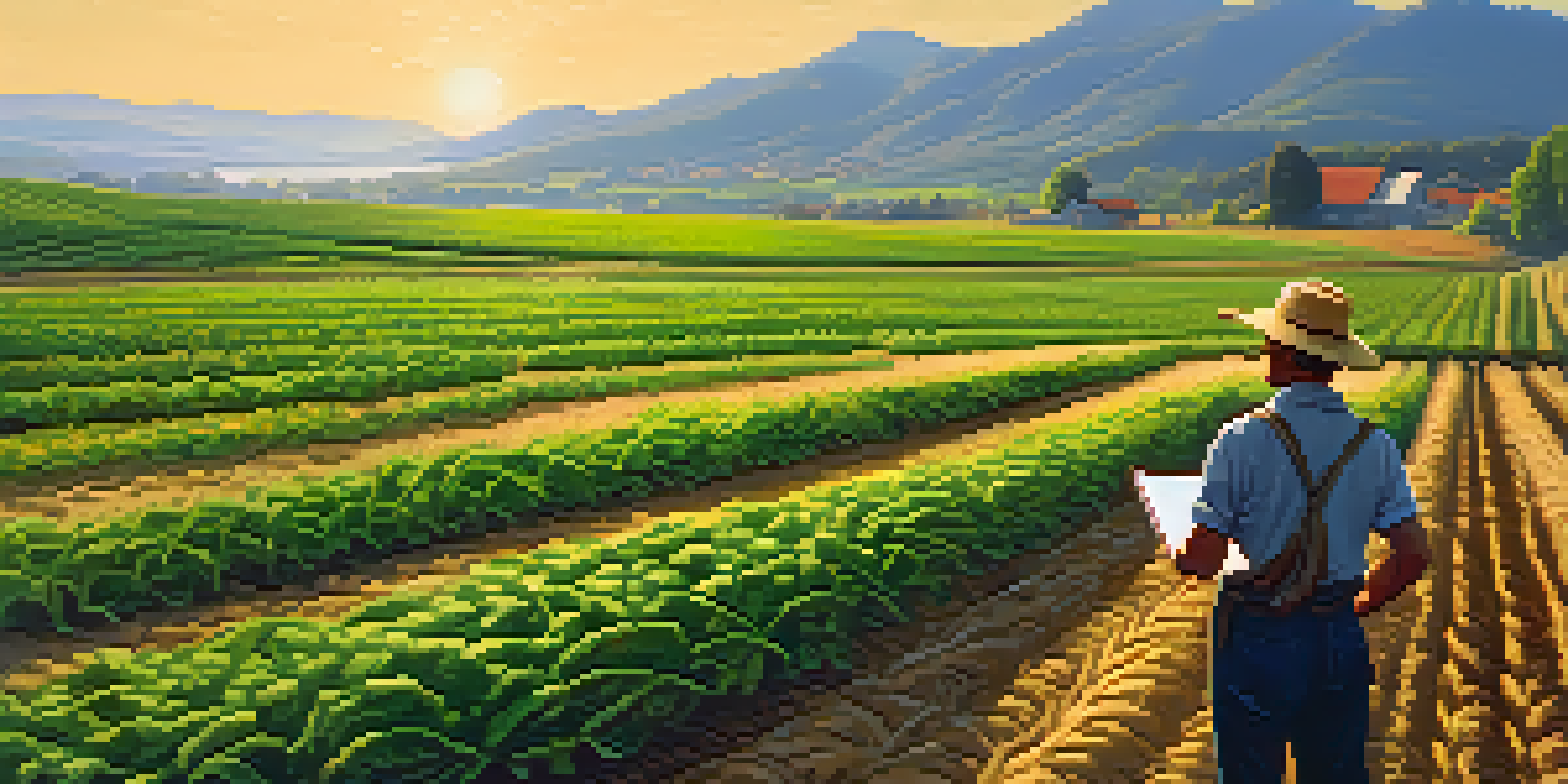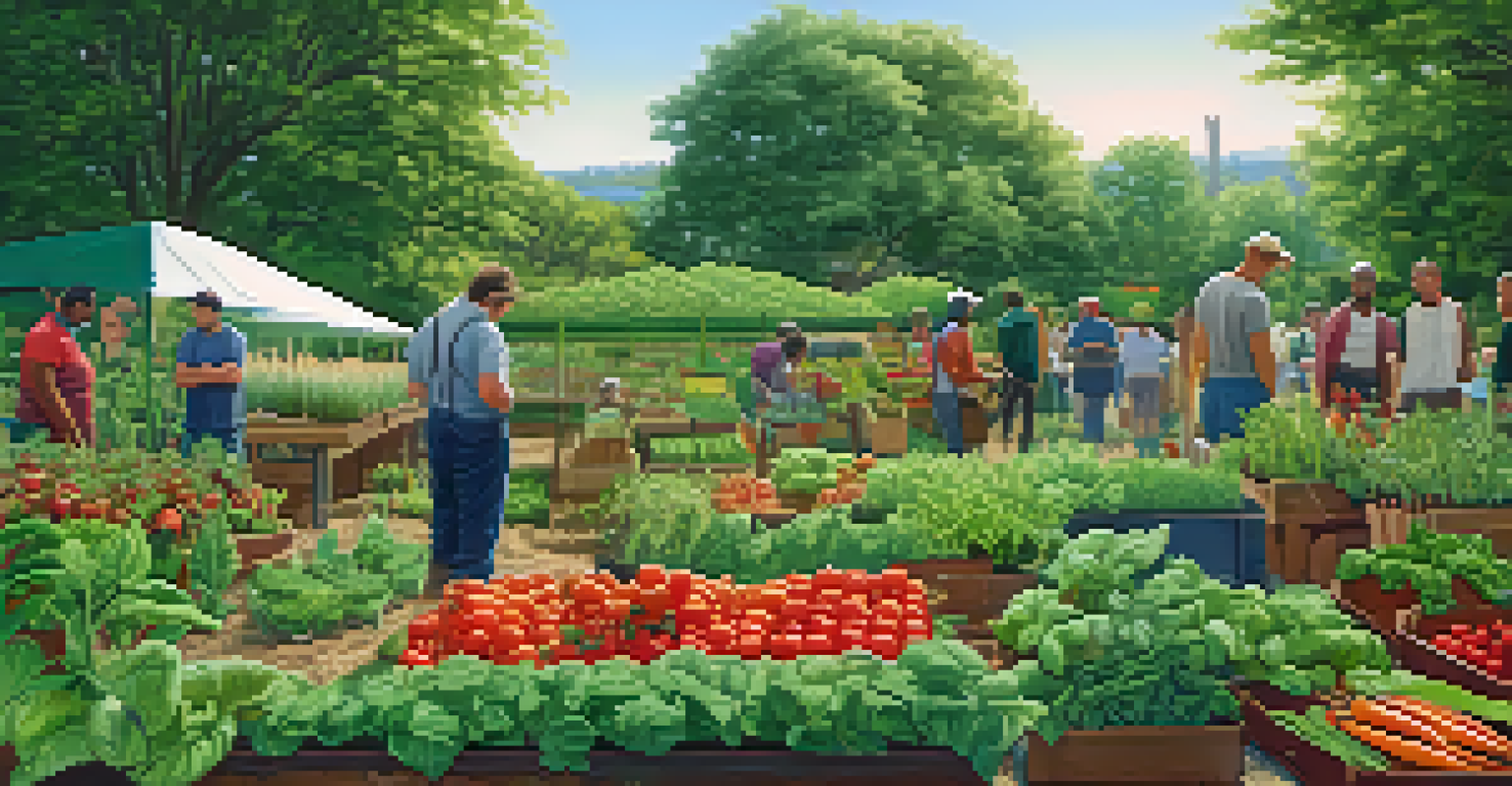Impact of Climate Change on Modern Plant Breeding Practices

Understanding Climate Change and Its Effects on Agriculture
Climate change refers to long-term shifts in temperatures and weather patterns, primarily driven by human activities. These shifts impact agriculture, as crops are sensitive to temperature, rainfall, and other environmental factors. For instance, rising temperatures can lead to heat stress in plants, reducing yield and quality.
We won't solve climate change without a fundamental shift in the way we grow and consume food.
As we face increased frequency of extreme weather events like droughts and floods, the challenges for farmers grow. These environmental stresses not only threaten existing crops but also impact soil health and biodiversity. This makes it crucial for the agricultural sector to adapt and evolve.
In response to these challenges, plant breeding practices are being re-evaluated. Breeders must now consider a wider range of environmental conditions to ensure that crops can thrive even in unpredictable climates.
The Role of Traditional Breeding in Climate Adaptation
Traditional breeding methods have been the backbone of agriculture for centuries. By selecting the best-performing plants, breeders have developed varieties that can withstand various conditions. However, with climate change introducing new stresses, these methods need a fresh perspective.

For example, breeders might focus on selecting plants that show resilience to drought or flooding. This process, although effective, can be time-consuming and may not keep pace with the rapid changes brought on by climate change. Therefore, there is a growing need to complement traditional methods with modern techniques.
Climate Change Affects Agriculture
Long-term shifts in climate, driven by human activity, threaten crop yield and quality, making adaptation essential.
In essence, traditional breeding will still play a vital role, but it must adapt to incorporate new challenges posed by our changing climate. It's a blend of old and new that will lead to more resilient agricultural systems.
Emerging Technologies in Plant Breeding
Advancements in technology are revolutionizing plant breeding practices. Techniques like genetic engineering and CRISPR gene editing allow for more precise modifications in plants. This means that breeders can introduce desirable traits, such as drought resistance, much faster than traditional breeding would allow.
Genetic diversity is the key to resilience—without it, our crops are vulnerable to climate change and disease.
For instance, CRISPR can enable the alteration of specific genes that control how plants respond to stress. By doing this, breeders can develop crop varieties that thrive in extreme conditions, ensuring food security despite climate challenges. This precision is a game-changer in the battle against climate change.
However, the integration of these technologies also raises important questions about ethics and safety. As we embrace these innovations, it's crucial to consider their long-term impacts on ecosystems and human health.
The Importance of Genetic Diversity in Breeding
Genetic diversity is like a safety net for agriculture. With a diverse gene pool, plants can better adapt to changing climates and resist diseases. This is especially important as climate change can create new pests and diseases that threaten crop production.
Plant breeders are increasingly recognizing the value of incorporating diverse genetic material into their breeding programs. This approach not only enhances resilience but also provides options for farmers facing different environmental challenges. For example, a diverse crop can spread the risk of total crop failure due to unforeseen climate events.
Importance of Genetic Diversity
Incorporating diverse genetic material into breeding programs enhances resilience against climate-related challenges.
Thus, fostering genetic diversity is not just about breeding better crops; it's about ensuring the sustainability of our food systems in an unpredictable future.
Collaboration Between Scientists and Farmers
The fight against climate change in agriculture requires collaboration between scientists and farmers. While researchers develop new breeding techniques, it's essential for farmers to provide feedback based on real-world experiences. This partnership can lead to the creation of crops that are not only resilient but also practical for on-the-ground use.
For instance, farmers can share insights about local conditions and challenges, helping scientists tailor their breeding efforts. This collaborative approach ensures that the developed varieties are well-suited to specific climates and agricultural practices, enhancing their chances of success.
Ultimately, bridging the gap between research and application can lead to innovative solutions that support both farmers and the environment as we navigate climate change.
Regulatory Challenges in Modern Plant Breeding
As new breeding technologies emerge, regulatory frameworks must evolve to keep pace. The introduction of genetically modified organisms (GMOs) and gene-edited crops has sparked debates about safety and labeling. These regulations can impact the speed at which new varieties reach the market, affecting farmers' ability to adapt to climate change.
For example, lengthy approval processes can delay the availability of crops that could significantly enhance food security in changing climates. It's essential for policymakers to strike a balance between ensuring safety and fostering innovation in plant breeding.
Collaboration is Key for Success
Effective partnerships between scientists and farmers are crucial for developing practical, climate-resilient crops.
So, while regulations are crucial, they must also be flexible and responsive to the urgent needs of agriculture in the face of climate challenges.
The Future of Plant Breeding and Climate Resilience
Looking ahead, the future of plant breeding is intertwined with climate resilience. As climate change continues to pose threats, breeders will play a pivotal role in developing crops that can adapt and thrive. This will require a combination of traditional methods, advanced technologies, and a deep understanding of environmental changes.
Furthermore, global collaboration will be key. Sharing knowledge, resources, and technologies across borders can accelerate the development of climate-resilient crops. By working together, we can create a more sustainable agricultural landscape worldwide.

Ultimately, the goal is to ensure food security for future generations while protecting our planet. Plant breeding will be at the forefront of this vital mission.